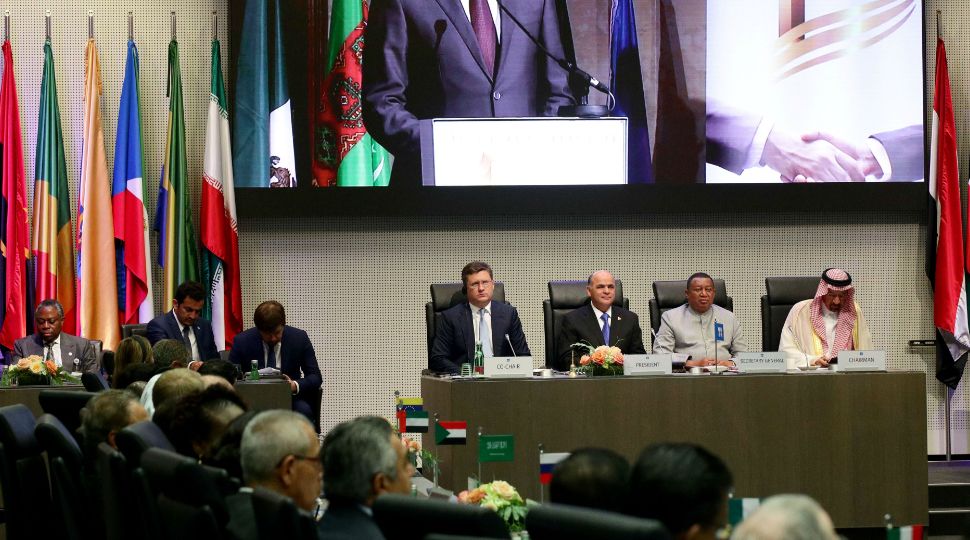COP28-Delegates Debate End to Fossil Fuel Use
COP28, the 28th Conference of the Parties to the United Nations Framework Convention on Climate Change (UNFCCC), was held in Dubai from 30 November to 12 December. Its aim was to review the actions taken to date to protect the climate, as well as to continue work in the area of financing and accelerating a just environmental transition. The most important achievement was the establishment of the Climate Loss and Damage Fund. The most controversial topic was the declaration to move away from fossil fuels.
 AMR ALFIKY / Reuters / Forum
AMR ALFIKY / Reuters / Forum
What were the critical negotiating themes and decisions at COP28?
With COP28 taking place in the United Arab Emirates and chaired by the head of the main state oil company, media aptly speculated that the most controversial issue would be the move away from fossil fuels, especially oil and gas. Although the forging of a compromise led to an extension of the summit by one day, a declaration on this issue was successfully adopted. COP28 also clarified the rules for the Climate Loss and Damage Fund, the creation of which had been announced at the previous summit. Agreement on this was reached on the first day. In addition, the conference adopted several important declarations relating to the issue of nuclear energy development and some less groundbreaking ones on reducing methane emissions, tripling RES power by 2030, improving energy efficiency, developing hydrogen technology and decarbonising industry (particularly in China and India). Insufficient time and attention was devoted to the annual Global Stocktake to which the Paris Agreement commits. The next climate summit will be in 2024 in Azerbaijan.
What is the assessment of the state of implementation of the Paris Agreement?
The Global Stocktake of the Paris Agreement is clear: the world is falling short of the agreed targets, so if current efforts are maintained, the expected increase in global temperature by 2100 will be between 2.5°C and 2.9°C. Meanwhile, exceeding the 1.5°C threshold adopted in the agreement risks serious climate-change impacts. The UN report prepared for COP28 indicates that greenhouse gas emissions must peak by 2025 at the latest and fall by 43% by 2030 to limit global warming to 1.5°C. At the same time, recent data show that the average global temperature in the first 11 months of 2023 reached 1.46°C above the 1850-1900 average.
The stocktake calls for a systemic transformation that includes increasing resilience to climate change and low-carbon economic development (with a shift away from fossil fuels). It also includes sustainable development and poverty eradication. In this context, it points to a growing gap between the needs of developing countries and the support provided to them.
What is the Climate Loss and Damage Fund?
The idea behind the fund is for developed countries (generally the Global North) to take financial responsibility for historical GHGs that have benefited them economically but contributed to climate change. The funds are to go to the countries of the Global South, which are the hardest hit by climate change and have the least capacity (including financially) to cope with its effects, including natural disasters. The fund’s functioning is based on the principle of voluntariness rather than, for example, compensation claims.
The initial funding is close to $726 million, with almost half coming from the EU and the rest from 18 developed countries, including Japan, the U.S., the UK, and the UAE. The list of donors does not include China, India, or Saudi Arabia, which claim they are not responsible for historical emissions and are still developing countries. The creation of the fund is a success of COP28, but its future is in doubt because of a lack of cyclical contributions, the voluntary nature of them, and that they are too small compared to the need. UN estimates indicate that the needs are as high as $387 billion per year (current pledges would cover about 0.2%).
What does the future of fossil fuels look like after COP28?
Disagreements over the future of fossil fuels revolved around whether countries should be urged to “phase down” or to “phase out” their production, as demanded by representatives of island states, the EU, and the U.S. Opponents of “phase-out” included OPEC+ countries, China, India and developing African countries.
The final declaration commits countries to develop plans to “move away” from fossil fuels in energy systems in this decade, taking into account, among other things, equity and various national circumstances. The goal is to reduce net emissions to zero by 2050. The adopted agreement only implements some of the recommendations suggested by scientists in the Paris Agreement Global Stocktake and will not save the planet from climate catastrophe. It did, however, help avoid a diplomatic disaster at COP28. It also represents a breakthrough as the first document from the COP to address the transition away from fossil fuels, albeit one stretching over decades.
How has the perception of nuclear power changed?
COP28 marked a turning point in the perception of the role of nuclear energy in the global environmental transition. For the first time, the final declaration described it as zero-carbon and called for accelerating its development. Twenty-two countries, including Poland, signed a declaration to triple the capacity of nuclear power plants by 2050, supporting the development of modern nuclear technologies (such as Small Modular Reactors) and inviting international financial institutions, including the World Bank, to integrate nuclear power into their lending policies. In addition, 35 countries signed the Plan for Fusion Development, which aims to accelerate the commercial deployment of fusion energy through cooperation in research and development, supply chains, and regulation. In addition, on the sidelines of COP28, the Sapporo 5 group (France, Japan, Canada, the U.S., and the UK) announced plans for a $4.2 billion government investment to create a secure global nuclear fuel supply chain free of Russian influence within three years. This is important for Poland, which plans to invest in nuclear power.


.png)


